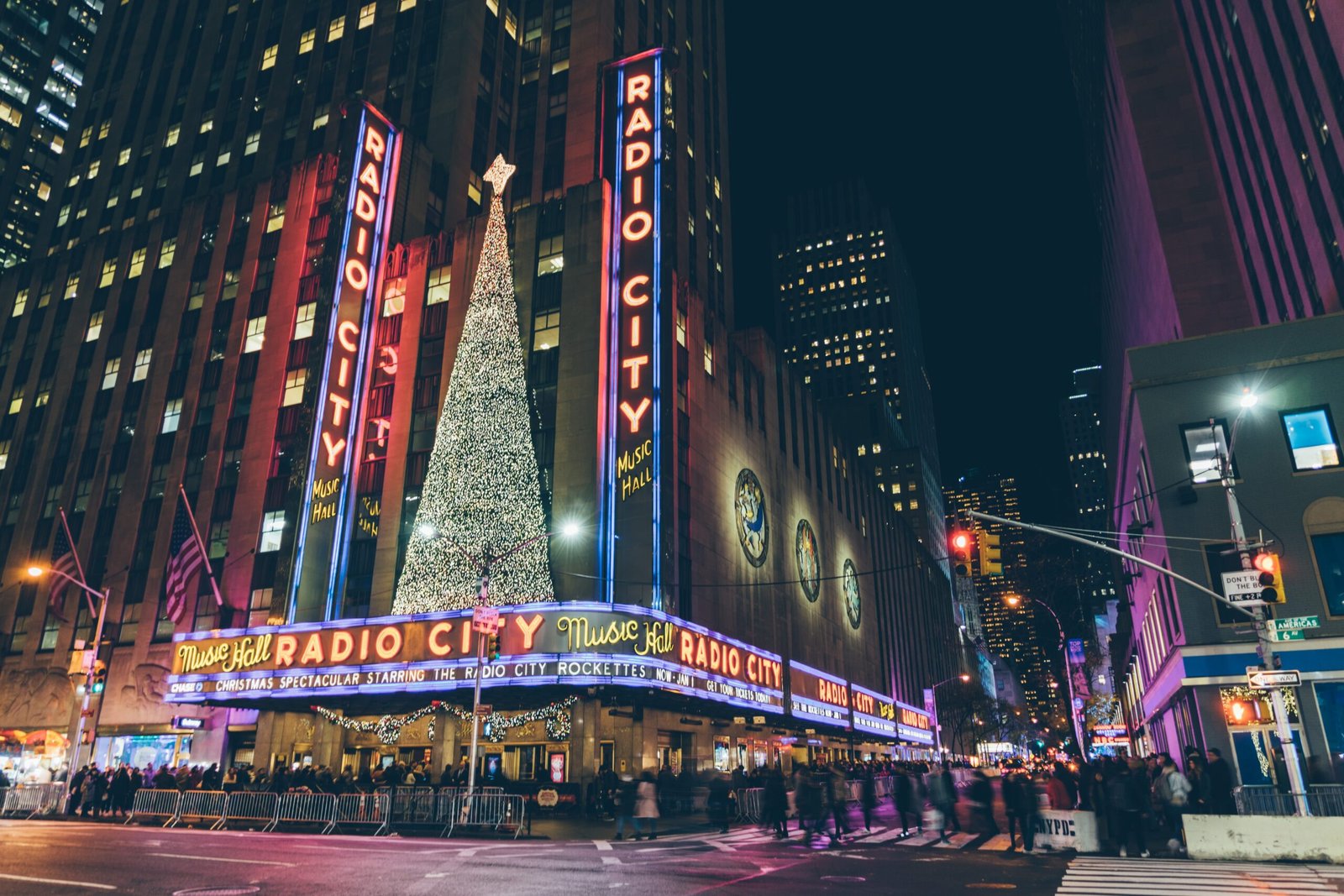On December 27, 1932, a momentous event took place in the heart of New York City. The iconic Radio City Music Hall, a masterpiece of Art Deco architecture, opened its doors for the first time. Designed by the renowned architects Edward Durell Stone and Donald Deskey, the Music Hall was one of the first structures to be completed in the sprawling Rockefeller Center complex.
The opening of Radio City Music Hall marked a significant milestone in the city’s cultural landscape. With its grandeur, elegance, and state-of-the-art facilities, the Music Hall quickly became a symbol of New York City’s artistic and entertainment prowess. It has since remained a beloved institution, hosting a wide range of concerts, stage shows, and special events.
The vision for Radio City Music Hall was born out of the ambition of John D. Rockefeller Jr., who sought to create a cultural hub in the heart of Manhattan. The construction of the Rockefeller Center complex was part of a larger effort to revitalize the city during the Great Depression. The Music Hall, with its capacity to hold over 6,000 people, was designed to be a centerpiece of this ambitious project.
Edward Durell Stone and Donald Deskey, the architects responsible for the design of Radio City Music Hall, were pioneers of the Art Deco movement. Their vision was to create a space that blended modernity with timeless elegance. The Music Hall’s exterior features a striking marquee adorned with intricate details, while the interior showcases lavish decorations and stunning murals by renowned artists.
When the doors of Radio City Music Hall opened on that fateful day in 1932, it was an instant success. The inaugural event featured the famous Roxyettes, a precision dance troupe, who dazzled the audience with their synchronized routines. The Music Hall’s stage, one of the largest in the world at the time, hosted a variety of performances, including musical acts, theatrical productions, and even film screenings.
Over the years, Radio City Music Hall has played host to countless legendary performers and events. From the iconic Rockettes’ Christmas Spectacular to concerts by renowned artists such as Frank Sinatra and Ella Fitzgerald, the Music Hall has witnessed some of the most memorable moments in entertainment history.
Despite its rich history, Radio City Music Hall faced the threat of demolition in the 1970s. However, thanks to the efforts of preservationists and the support of the public, the Music Hall was saved from destruction. It was subsequently designated as a New York City Landmark in 1978 and later listed on the National Register of Historic Places.
Today, Radio City Music Hall continues to captivate audiences with its timeless charm and world-class performances. Its iconic Art Deco design, impeccable acoustics, and unparalleled stage capabilities make it a sought-after venue for artists and audiences alike. The Music Hall remains a testament to the enduring power of art and culture in shaping the identity of a city.
The opening of Radio City Music Hall in 1932 was a pivotal moment in New York City’s cultural history. Its grandeur and elegance have made it an architectural gem, while its contributions to the performing arts have made it a beloved institution. As we reflect on the significance of this historic event, we are reminded of the enduring impact of Radio City Music Hall on the artistic landscape of New York City and beyond.
References:
- Rockefeller Center – Radio City Music Hall History
- NYC Parks – Radio City Music Hall History
- History.com – Radio City Music Hall Opens
SEO Excerpt:
Discover the rich history and cultural significance of the opening of Radio City Music Hall in 1932. Learn about the iconic Art Deco architecture, the renowned architects behind its design, and the lasting impact it has had on the artistic landscape of New York City. Explore the grandeur and elegance of this historic venue that continues to captivate audiences to this day.

